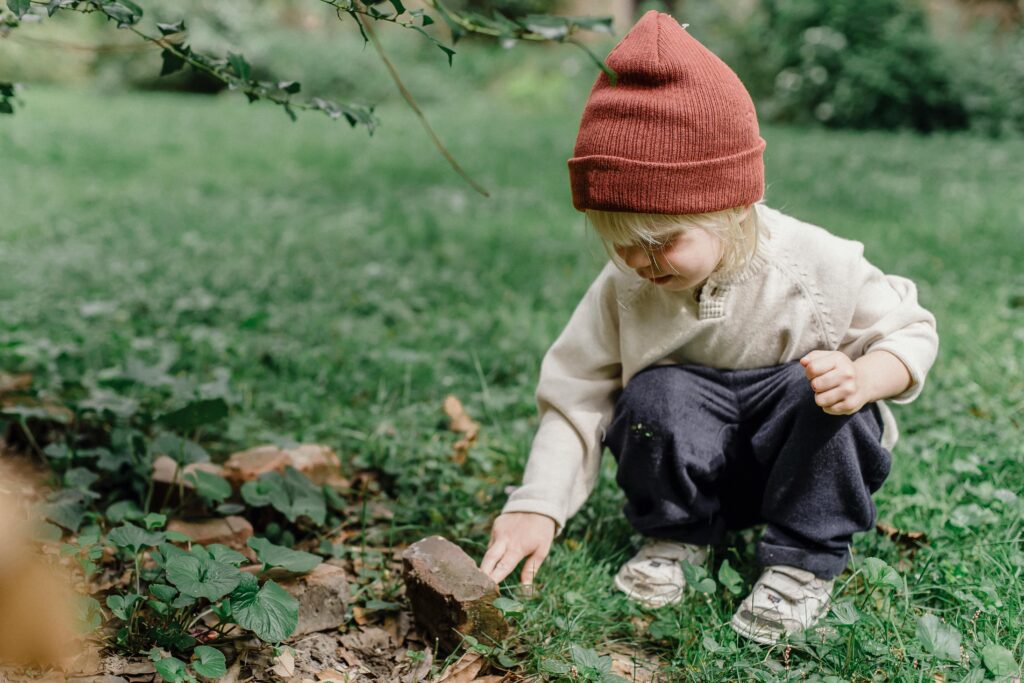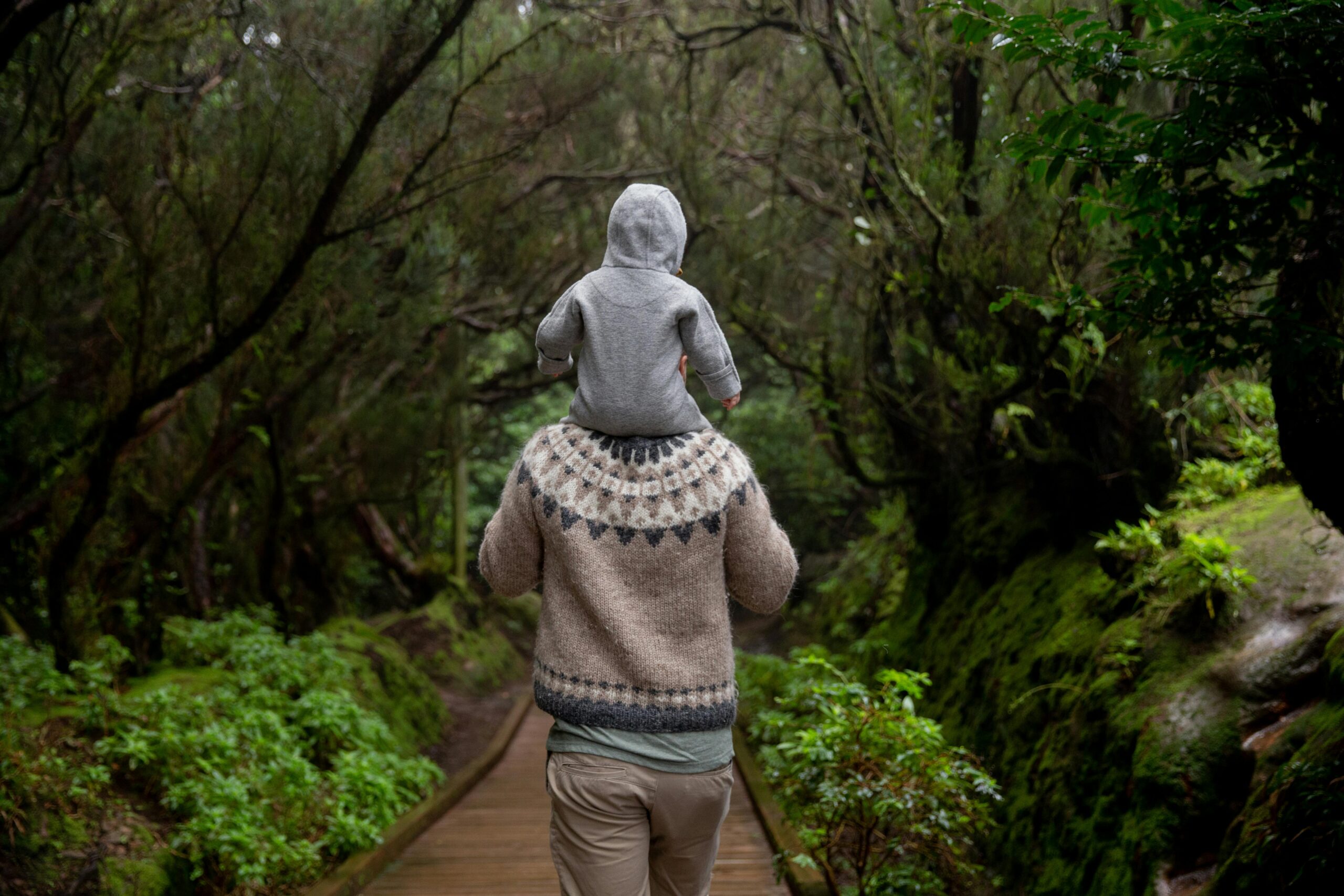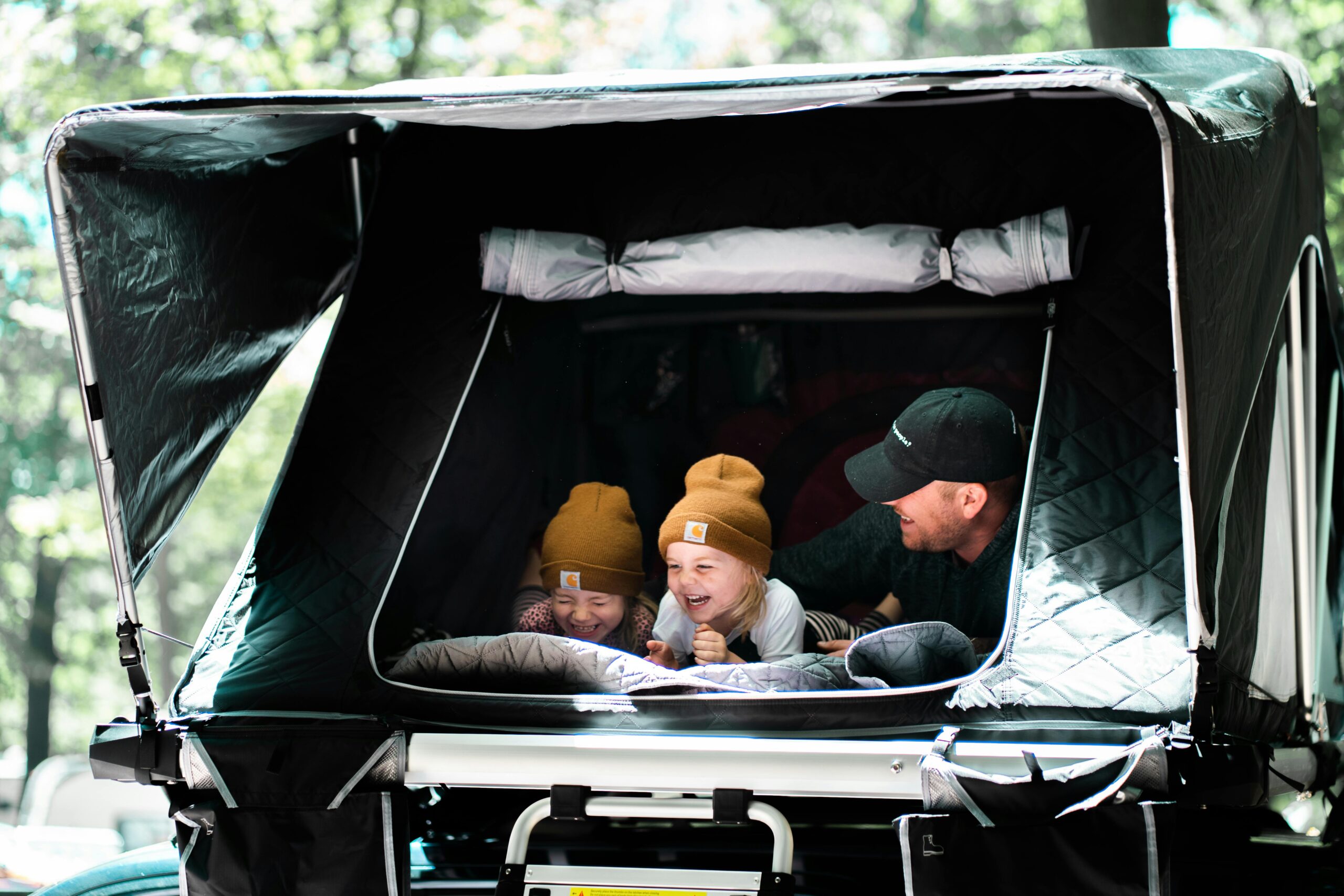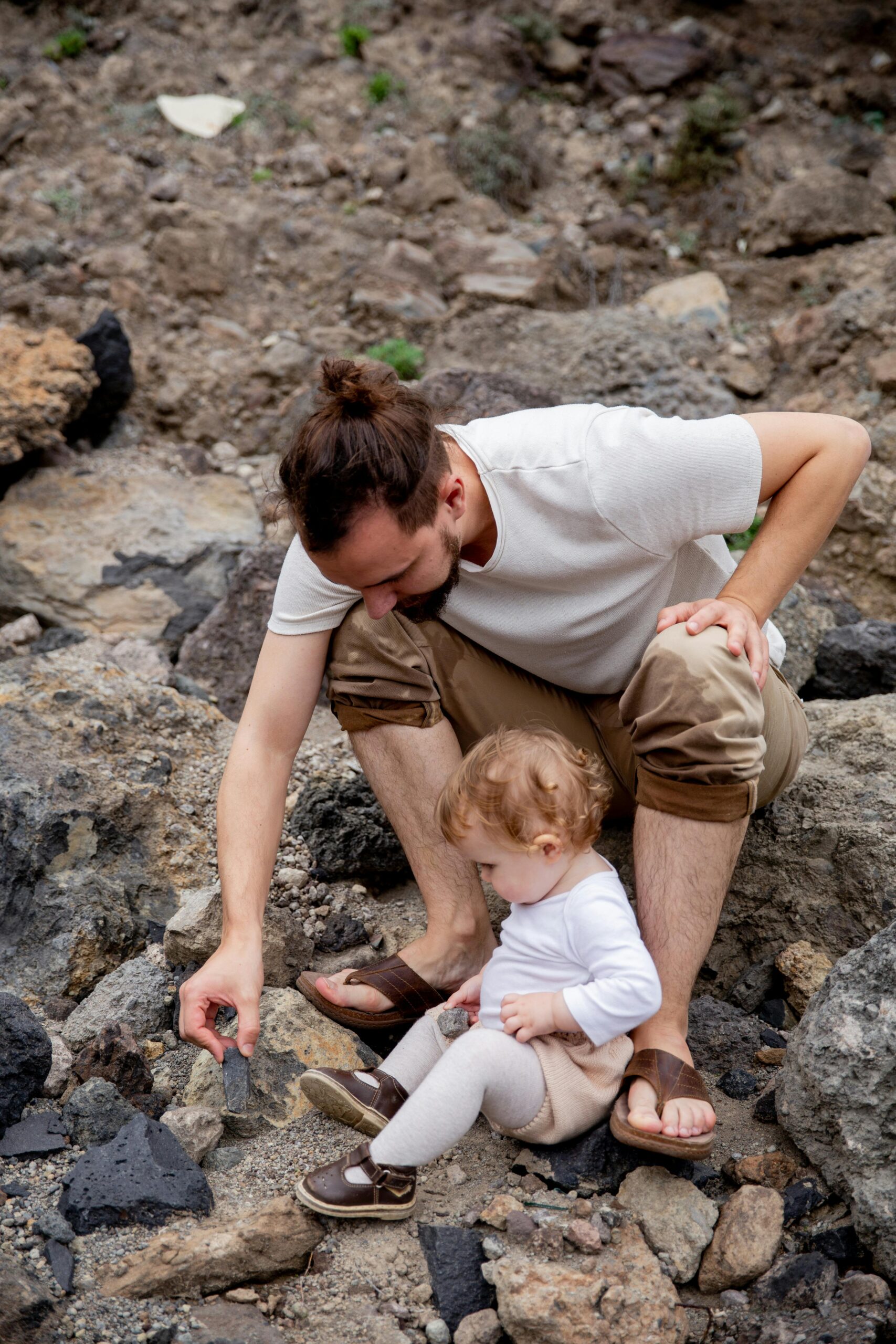In today’s fast-paced world, it’s more important than ever to take the time to connect with nature, and what better way to do so than by exploring the beauty of national parks with your children? National parks offer a treasure trove of natural wonders waiting to be discovered, providing the perfect backdrop for unforgettable family adventures. Not only do these excursions offer opportunities for bonding and creating lasting memories, but they also provide numerous benefits for children, from fostering a love of the outdoors to encouraging curiosity and learning. Join us as we delve into the world of national parks and discover how exploring nature with your kids can be both rewarding and enriching.
Choosing the Right National Park
When planning a family trip to a national park, it’s essential to consider various factors to ensure the experience is enjoyable and suitable for kids. National parks offer a plethora of activities and natural wonders, but not all are equally suitable for young adventurers. Here are some key considerations to keep in mind when selecting a park for your family outing.
Considerations for selecting a park suitable for kids
- Accessibility: Choose a park that is easily accessible, especially if you have young children. Look for parks with paved trails, accessible restrooms, and visitor centers equipped with family-friendly amenities.
- Safety: Safety should be a top priority when traveling with kids. Opt for parks with well-marked trails, ranger-led programs, and clear safety guidelines. Avoid parks with hazardous terrain or dangerous wildlife.
- Family-friendly activities: Look for parks that offer a variety of family-friendly activities, such as nature walks, Junior Ranger programs, guided tours, and interactive exhibits. Check the park’s website or visitor’s guide for information on age-appropriate activities.
- Educational opportunities: National parks provide excellent opportunities for children to learn about nature, history, and conservation. Choose a park with educational programs and interpretive displays geared towards young visitors.
- Facilities: Consider the availability of facilities such as picnic areas, playgrounds, and visitor centers with indoor exhibits. These amenities can enhance the overall experience for families with kids.
- Scenic beauty: While kids may not appreciate the grandeur of natural landscapes in the same way adults do, it’s still important to choose a park with scenic beauty that can capture their imagination and inspire a sense of wonder.
Diversity of experiences offered by different parks
- Natural attractions: National parks vary widely in terms of their natural features, from towering mountains and cascading waterfalls to lush forests and vast deserts. Consider the types of landscapes and ecosystems that will interest your family the most.
- Historical significance: Many national parks have significant historical sites and cultural landmarks that can enrich your family’s understanding of the past. Look for parks with historical exhibits, archaeological sites, and preserved landmarks.
- Recreational activities: From hiking and camping to kayaking and wildlife watching, national parks offer a wide range of recreational activities for families to enjoy together. Choose a park with activities that align with your family’s interests and abilities.
- Seasonal variations: Keep in mind that the experience of visiting a national park can vary depending on the season. Some parks are best visited in the summer months when weather is mild and trails are accessible, while others offer unique attractions during the winter months, such as snowshoeing and cross-country skiing.
- Cultural events and festivals: Some national parks host special events, festivals, and cultural programs throughout the year. Check the park’s event calendar to see if there are any upcoming activities that your family might enjoy.
By considering these factors and doing some research beforehand, you can choose the perfect national park for your family adventure and create lasting memories together in the great outdoors.
Preparing for Your Trip
When embarking on a family adventure to a national park, proper preparation is key to ensuring a smooth and enjoyable experience for everyone. From packing essentials to planning kid-friendly activities, here are some tips to help you prepare for your trip.
Packing essentials for a family adventure
Packing efficiently and thoughtfully can make all the difference when traveling with kids. Here are some essential items to consider bringing along for your national park excursion:
Clothing: Pack layers suitable for the weather conditions at the park, including sturdy hiking shoes, rain gear, hats, and sunscreen. Don’t forget to include extra clothing for young children in case of accidents or spills.
Food and snacks: Keep hunger at bay by packing plenty of snacks and meals for your family. Opt for portable, non-perishable items such as granola bars, trail mix, fruit, and sandwiches. Don’t forget to pack plenty of water to stay hydrated throughout the day.
First aid kit: Be prepared for minor scrapes and injuries with a well-stocked first aid kit. Include items such as band-aids, antiseptic wipes, pain relievers, insect repellent, and any necessary medications for your family.
Navigation tools: Bring along a map of the park, compass or GPS device, and a fully charged cell phone or portable charger. These tools can help you navigate the trails and ensure you stay on course during your adventure.
Safety gear: Depending on the activities you have planned, consider packing safety gear such as helmets for biking or life jackets for water activities. Always prioritize safety when participating in outdoor adventures with your family.
Planning kid-friendly activities and hikes
National parks offer a wide range of activities and hiking trails suitable for families with children of all ages. Here are some tips for planning kid-friendly adventures:
Research family-friendly trails: Look for hiking trails that are short, well-marked, and offer interesting features such as waterfalls, wildlife sightings, or scenic viewpoints. Check the park’s website or visitor center for recommendations on kid-friendly hikes.
Engage in nature-based activities: Get your kids excited about exploring the great outdoors by planning nature-based activities such as scavenger hunts, bird watching, or nature journaling. Encourage them to use their senses to observe and interact with the natural world around them.
Take breaks and pace yourself: Keep in mind that young children may tire more quickly than adults, so be sure to schedule plenty of breaks and pace your activities accordingly. Allow time for rest, snacks, and spontaneous exploration along the way.
Encourage curiosity and exploration: Foster a sense of curiosity and wonder in your children by encouraging them to ask questions, make observations, and explore their surroundings. Use the opportunity to teach them about the plants, animals, and geology of the park.
By packing wisely and planning kid-friendly activities, you can ensure that your family trip to the national park is a memorable and enjoyable experience for everyone.
Exploring Nature with Kids
National parks offer boundless opportunities for children to connect with nature and learn about the environment in an interactive and engaging way. From hands-on activities to wildlife spotting, here are some ideas for exploring nature with kids during your visit to a national park.
Engaging activities for children in national parks
- Nature scavenger hunts: Create a list of items for your children to find while exploring the park, such as different types of leaves, animal tracks, or specific plants. Encourage them to use their observation skills and creativity as they search for each item.
- Junior Ranger programs: Many national parks offer Junior Ranger programs designed to engage children in educational activities and encourage them to learn about conservation and environmental stewardship. Kids can earn badges by completing tasks such as attending ranger-led programs, completing activity booklets, and participating in volunteer projects.
- Wildlife watching: Take your children on a wildlife watching adventure to observe animals in their natural habitat. Bring along binoculars and a field guide to help identify birds, mammals, and other wildlife species you encounter along the way.
- Nature photography: Encourage your children to capture the beauty of the natural world through photography. Provide them with a camera or smartphone and challenge them to take photos of interesting plants, animals, and landscapes during your hike.
- Nature crafts: Get creative with nature-themed crafts that incorporate materials found in the park, such as pinecones, leaves, and rocks. Children can make leaf rubbings, rock paintings, or nature collages using their artistic skills and imagination.
Tips for encouraging curiosity and learning
- Ask open-ended questions: Foster curiosity in your children by asking open-ended questions that encourage them to think critically and explore their surroundings. Encourage them to ask questions of their own and seek out answers through observation and investigation.
- Follow their interests: Pay attention to your children’s interests and passions, and tailor your nature exploration activities to align with their preferences. Whether they’re fascinated by birds, insects, or plants, provide opportunities for them to learn more about their favorite subjects.
- Be a role model: Lead by example by demonstrating your own curiosity and enthusiasm for nature. Point out interesting plants, animal tracks, and natural phenomena as you explore the park together, and share your knowledge and excitement with your children.
- Encourage sensory exploration: Encourage your children to engage their senses as they explore the natural world. Encourage them to touch, smell, listen to, and even taste the plants and animals they encounter, allowing them to form a deeper connection with nature.
- Embrace teachable moments: Take advantage of teachable moments that arise during your nature adventures to impart valuable lessons about ecology, conservation, and the importance of protecting our natural resources. Use these opportunities to instill a sense of stewardship and responsibility in your children.
By engaging in hands-on activities, asking questions, and fostering a sense of curiosity and wonder, you can help your children develop a lifelong appreciation for the beauty and complexity of the natural world.
Safety and Responsibility
When exploring the great outdoors with kids, safety and responsibility are paramount. Teaching children about respecting nature and wildlife, as well as ensuring their safety during outdoor adventures, are essential components of any family trip to a national park or wilderness area.
Teaching kids about respecting nature and wildlife
- Leave no trace: Teach your children the principles of Leave No Trace, which emphasize minimizing impact on the environment and leaving natural spaces pristine for future generations. Encourage them to pack out trash, stay on designated trails, and avoid disturbing plants and animals.
- Wildlife etiquette: Help your children understand the importance of respecting wildlife from a safe distance. Teach them not to approach or feed wild animals, as this can disrupt their natural behavior and pose risks to both humans and animals. Use binoculars or a telephoto lens to observe wildlife from a distance without causing disturbance.
- Stay on trails: Emphasize the importance of staying on designated trails to protect fragile ecosystems and minimize erosion. Teach your children to respect trail boundaries and avoid trampling vegetation or creating new paths through sensitive habitats.
- Responsible pet ownership: If you’re bringing a pet along on your outdoor adventures, make sure to keep them on a leash at all times and clean up after them. Respect any pet regulations or restrictions in the park, and be mindful of how your pet’s presence may impact wildlife and other visitors.
- Lead by example: Set a positive example for your children by demonstrating respectful behavior towards nature and wildlife. Show them how to tread lightly on the land, observe wildlife from a safe distance, and follow park rules and regulations.
Ensuring safety during outdoor adventures
- Plan ahead: Before heading out on your outdoor adventure, take the time to research the area, familiarize yourself with the terrain, and check the weather forecast. Create a detailed itinerary and share it with someone responsible who can assist in case of emergency.
- Pack essential safety gear: Ensure you have essential safety gear such as a map, compass or GPS device, first aid kit, whistle, flashlight, and extra food and water. Dress appropriately for the weather conditions and bring along any necessary gear for the activities you have planned.
- Stay together: Establish clear guidelines for staying together as a family during outdoor adventures. Set boundaries for how far children can wander from the group and teach them to always stay within sight and earshot of an adult.
- Know your limits: Be honest about your family’s abilities and limitations when planning outdoor activities. Choose trails and activities that are suitable for everyone’s skill level and physical fitness, and be prepared to adjust your plans if necessary.
- Practice safety rules: Review basic safety rules with your children, such as looking both ways before crossing roads, avoiding dangerous areas like cliffs or swift water, and knowing what to do in case of emergencies such as getting lost or encountering wildlife.
By instilling a sense of responsibility for nature and wildlife and prioritizing safety during outdoor adventures, you can help ensure that your family’s experiences in the great outdoors are enjoyable, enriching, and safe for everyone involved.
Making Memories
Spending quality time together as a family in nature is not just about having fun; it’s also about creating lasting memories and strengthening bonds that will be cherished for years to come. Here’s why cherishing family time in nature is so important, along with tips for documenting your experiences to preserve those memories forever.
Importance of cherishing family time in nature
The hustle and bustle of modern life can often leave families feeling disconnected and stressed. However, spending time together in nature provides a welcome opportunity to slow down, unplug, and reconnect with each other and the natural world. Studies have shown that spending time in nature can reduce stress, improve mood, and strengthen family relationships.
Nature also offers a wealth of learning opportunities for children, allowing them to explore, discover, and engage with the world around them in meaningful ways. Whether it’s observing wildlife, identifying plants, or simply playing in the great outdoors, these experiences help children develop a deeper appreciation for the environment and foster a sense of wonder and curiosity.
Moreover, family adventures in nature create memories that last a lifetime. From hiking to waterfalls and roasting marshmallows around a campfire to stargazing under the night sky, these shared experiences become cherished stories that families will fondly reminisce about for years to come.

Documenting experiences through photos and journals
One of the best ways to preserve and relive your family’s outdoor adventures is by documenting them through photos and journals. Here are some tips for capturing and recording your experiences in nature:
Photography: Bring along a camera or smartphone to capture the beauty of the natural world and the joy on your family’s faces as you explore together. Encourage your children to take their own photos and capture their unique perspectives of the adventure.
Journaling: Keep a family nature journal to document your experiences, observations, and reflections during your outdoor adventures. Write about the sights, sounds, and smells you encounter, as well as any interesting discoveries or memorable moments shared as a family.
Scrapbooking: Create a scrapbook or digital photo album to compile your favorite photos, journal entries, and mementos from your family’s nature adventures. Get creative with decorative elements such as stickers, drawings, and captions to personalize your keepsake.
Sharing memories: Share your photos and stories with friends and family members to spread the joy of your outdoor adventures and inspire others to connect with nature. Consider creating a family blog or social media account to document your adventures and connect with like-minded outdoor enthusiasts.
By cherishing family time in nature and documenting your experiences through photos and journals, you can create a treasure trove of memories that will be cherished for generations to come. So pack your bags, hit the trails, and start making memories together in the great outdoors!
FAQs
Q. What are National Parks?
A. National Parks are protected areas of land, designated by the government, that aim to conserve natural landscapes, wildlife, and cultural heritage for future generations to enjoy.
Q. Why should I take my kids to National Parks?
A. Taking your kids to National Parks provides them with opportunities to explore and connect with nature, learn about conservation, and appreciate the beauty and diversity of our planet. It also promotes physical activity and outdoor recreation.
Q. Are National Parks suitable for kids of all ages?
A. Yes, National Parks offer a wide range of activities and experiences suitable for kids of all ages, from easy nature walks and Junior Ranger programs for younger children to more challenging hikes and educational programs for teenagers.
Q. What activities can my kids do in National Parks?
A. Depending on the park, activities for kids may include hiking, wildlife watching, camping, fishing, biking, ranger-led programs, educational workshops, and Junior Ranger activities where kids can earn badges by completing fun tasks.
Q. How can I prepare my kids for a trip to a National Park?
A. Before your trip, involve your kids in planning, research the park together, pack appropriate clothing and gear, and discuss safety guidelines. Encourage them to ask questions, be curious, and respect nature.
Q. Are there any safety tips I should keep in mind when visiting National Parks with kids?
A. Yes, it’s important to stay on marked trails, watch out for wildlife, stay hydrated, and follow park rules and regulations. Teach your kids about Leave No Trace principles, including the importance of not littering and respecting wildlife from a safe distance.
Conclusion
As we wrap up our exploration of exploring national parks with kids, it’s clear that these adventures offer far more than just scenic landscapes and fresh air. They provide invaluable opportunities for families to bond, learn, and grow together. From the excitement of spotting wildlife to the wonder of discovering hidden waterfalls, every moment spent exploring nature with your children is a chance to create cherished memories that will last a lifetime. So why wait? Start planning your next family adventure to a national park today and embark on a journey filled with endless possibilities and unforgettable experiences.




